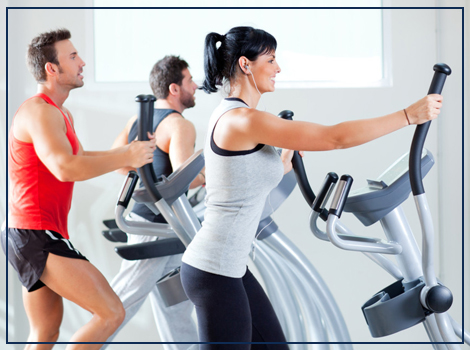Dr Manish Singhal - The best Cancer Specialist in Delhi
Exercise and Physical Activities
How can exercise help you during cancer?
- Helps in improve your physical abilities
- Improve balance, lower risk of falls and broken bones
- Keep muscles from wasting due to inactivity
- Lower the risk of heart disease
- Lessen the risk of osteoporosis (weaken bones which may break)
- Improves blood flow to your legs and lower the risk of blood clots
- Make you less dependent on others for help for normal day-to-day activities
- Improve your self-esteem
- Lower the risk of being anxious & depressed
- Lessen nausea
- Improve your ability to keep social contacts
- Lessen symptoms of fatigue
- Help you control your weight

During the time of treatment
Being physically active during cancer treatment is very necessary,and every person’s exercise program should be based on what’s safe and what works best for them. The exercise should also have something which you love doing.This plan should be made keeping in mind your body limits, your stamina and workouts which you already do.
Certain things affect your ability to exercise, for instance:
- The type and stage of cancer you have
- Your cancer treatment
- Your stamina, strength, fitness level
The objective is to stay as active and fit as possible. People who were very inactive before cancer treatment should start with short, low-intensity activity, Short Walks are fine at the starting stage. For elderly people, those suffering from osteoporosis(bone thinning), or problems like arthritis or peripheral neuropathy (numbness in hands or feet), safety and balancing are important to reduce the risk of falls and injuries. They may need someone who can take care of them or health professional/trainer during exercise.
Whether you’re just starting exercise or continuing it, your doctor should have input on tailoring an exercise program to meet your interests and needs. Keep your cancer team informed on how you’re doing in regards to your activity level and exercise throughout your treatment.
After cancer treatment
Few side effects get better within the starting few weeks after your treatment ends, but some lasts longer or even appear later. Most people slowly increase exercise time and intensity. A low- or moderate-intensity activity for a healthy person can seem like a high-intensity activity for some cancer survivors. Keep in mind that moderate exercise is defined as activity that takes as much effort as a brisk walk. During this physical activity is important for your overall health and quality of life. It may even help some people live longer. There’s evidence that getting to stay at a healthy weight, eat right, and being physically active may help reduce the risk of a second cancer as well as other serious chronic diseases. More research is needed to be sure about these possible benefits.
- Take part in regular physical activity.
- Avoid inactivity and return to normal daily activities as soon as possible after diagnosis.
- Aim to exercise at least 2-3 hours per week.
- Include strength training exercises at least 2 days per week.
Involve in physical activities
Here are some ways to add physical activity on daily basis. Remember, only do what you feel up to doing.
- Walk around your neighborhood after dinner.The type and stage of cancer you have
- Ride your bike.
- Cut the grass, or rake leaves.
- Scrub your bathroom.
- Wash and wax your car.
- Play active games with kids, like jump rope, and the games you played when you were a kid.
- Walk a dog (a disciplined dog, so that you have less stress while controlling him).
- Weed your garden.
- Take a friend dancing, or dance in your own living room.
- Use an exercise bike or treadmill, or do arm curls, squats, lunges, and crunches while watching TV.
- Walk to lunch.
- Use the stairs instead of the elevator or escalator.
- Get off the bus several stops early and walk the rest of the way to work.
- Make appointments for yourself in your daily planner for 10-minute walking breaks.
- Form a walking club of co-workers to help you stay motivated to walk during the workday.
- Wear a pedometer every day and try to increase your daily steps.



